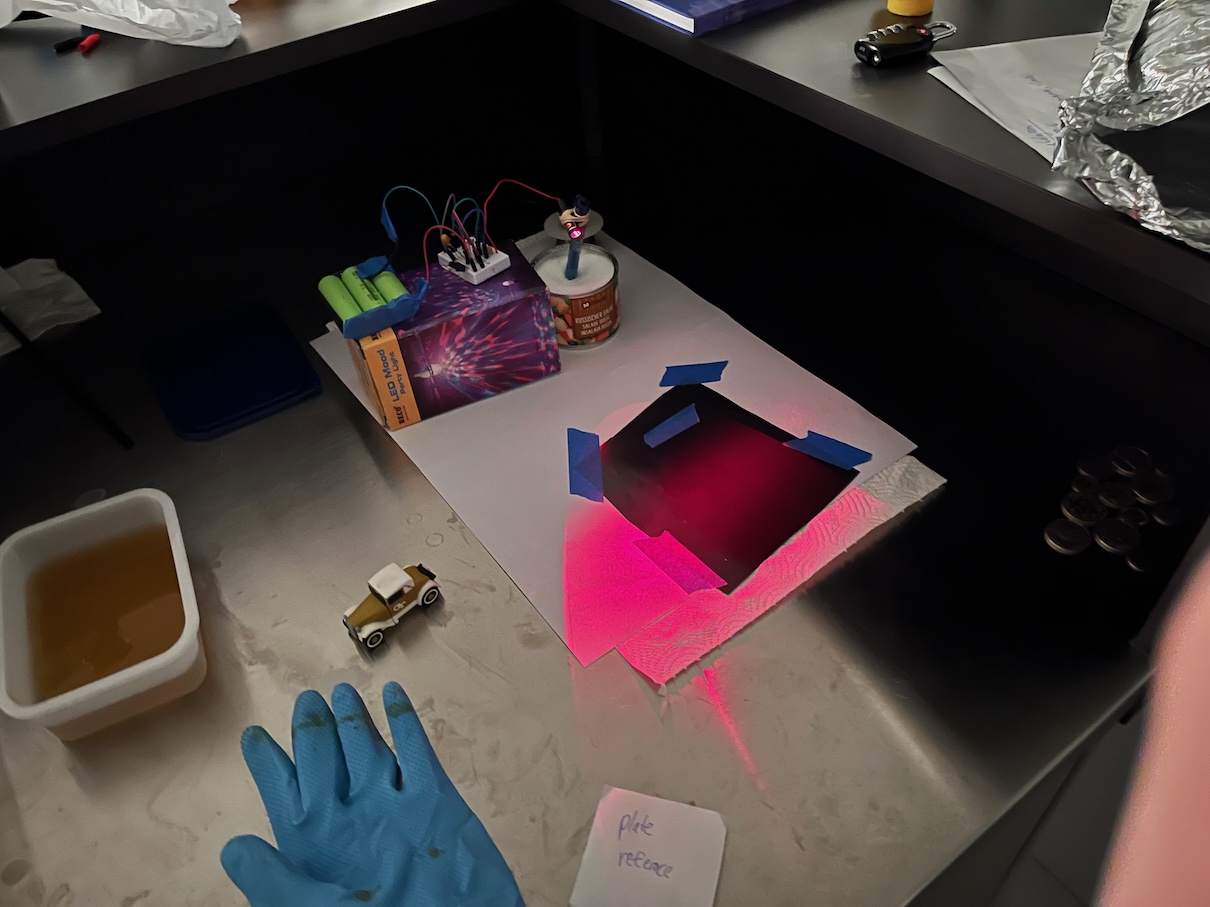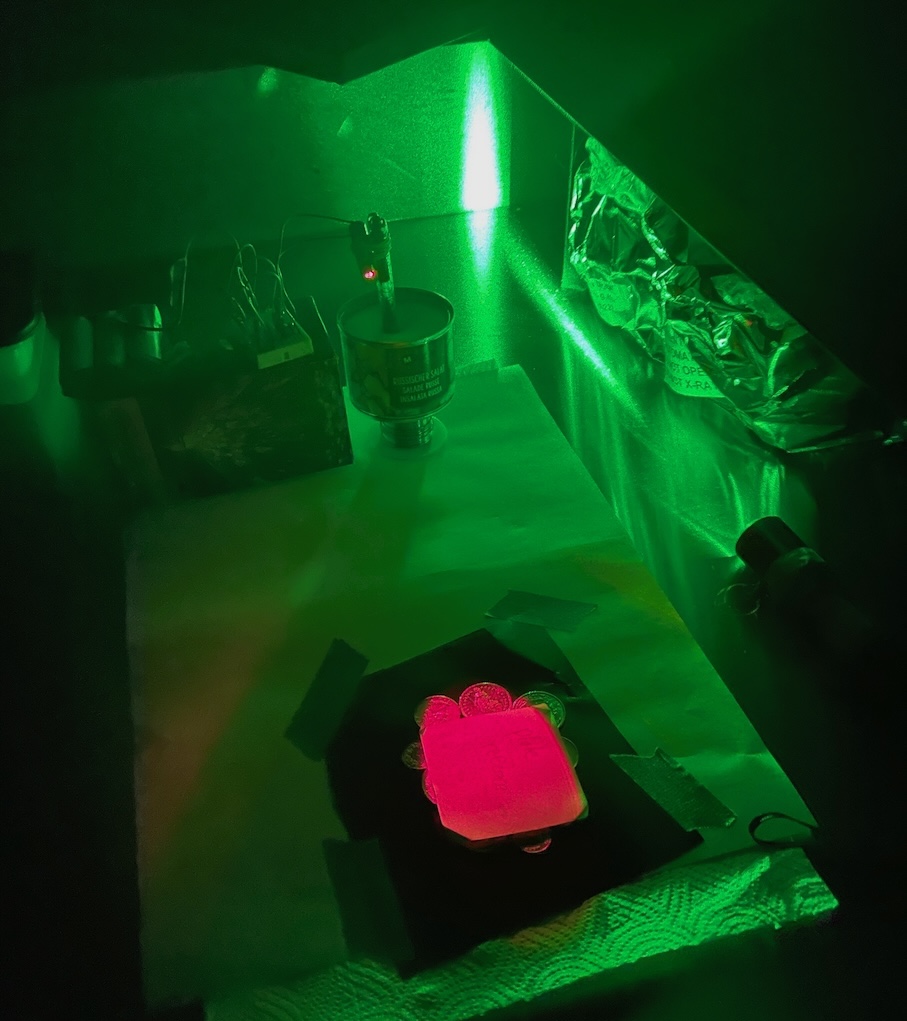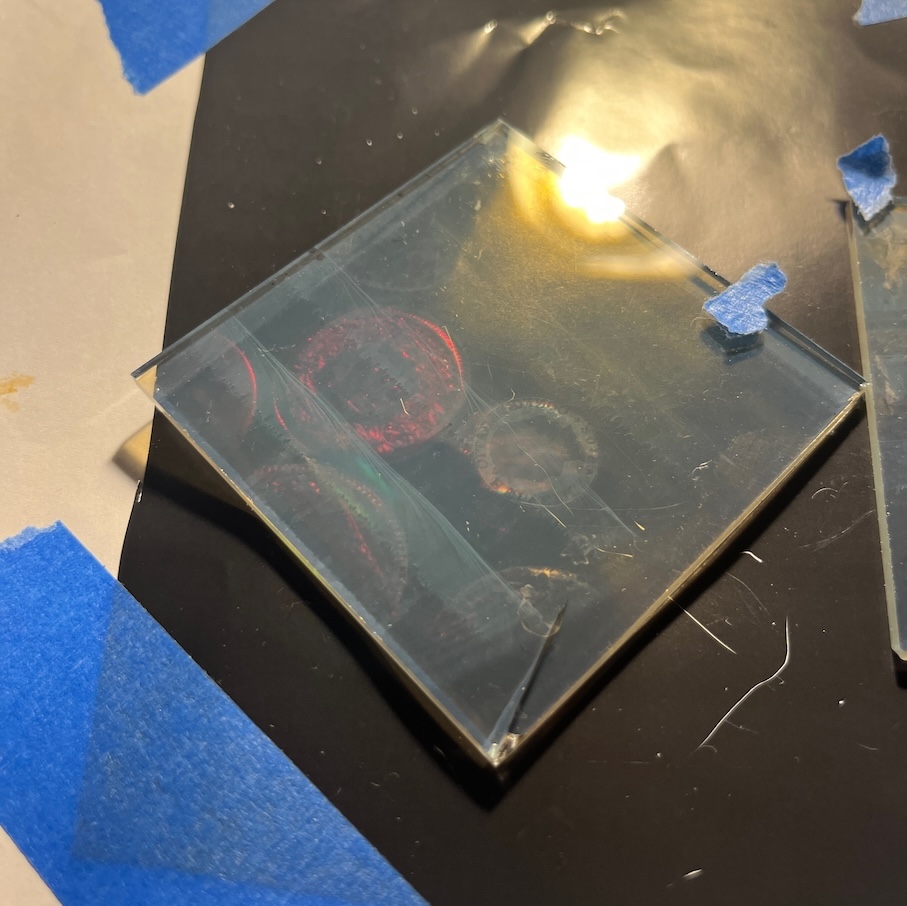Laser Holograms
Trapping 3D objects in a 2D sheet of glass
Timespan: Oct 2022 - now, on and off
Published: 2024-10-20
Overview
In this post I'm going to talk a lot about laser holography, a bit of a "lost art" of photography which many people and companies heralded as the successor to analog film. Alas, holograms lost out to digital photography, and today it's rarely practiced. Anyway, I'm going to tell you a bit about them, and then share all my tacit knowledge that I've learned from trying to make them 10+ times across two years.
Background
At the Oak Street Gallery in Pittsburgh, I saw something I thought was impossible. It was a glass screen with what appeared to be a real drum behind it. I was immediately captivated. I spent a long time searching about this technique to see how I could do it also. It kind of peaked in the 80s but is still possible today.
New holograms! pic.twitter.com/2m3mCtCnpR
— Andy Kong (@oldestasian) August 3, 2024
Broadly, you need to purchase some hologram plates. These are special photographic film plates with a very small particle size which allows you to capture the interference fringes from lasers interfering with themselves. For more details on how this works, I link you to 3Blue1Brown's excellent YouTube video: How holograms work.
To expose them, you use a coherent light source like a laser. Diode lasers like those found in presentation pointers are acceptable, but their coherent length is too short to capture anything deep (>1cm).
You set up the plate over your objects, then expose from the top. Later when you show people, you'll have to illuminate the hologram from the same direction that you exposed it from, so make sure it's not an uncomfortable angle.
Wash, Cure, etc. Please email me if you want me to add more steps, otherwise, it's going to take a few months for me to get back to this...


